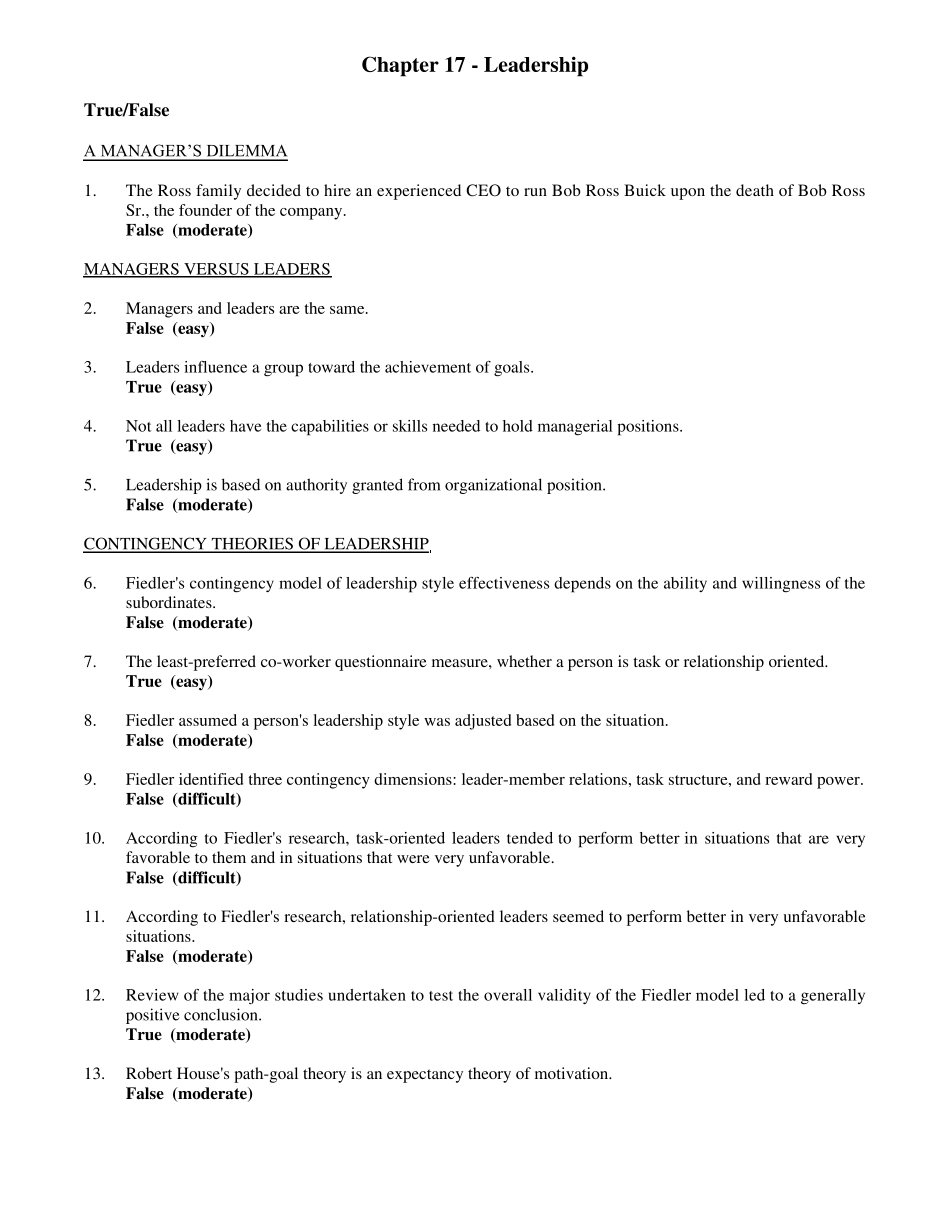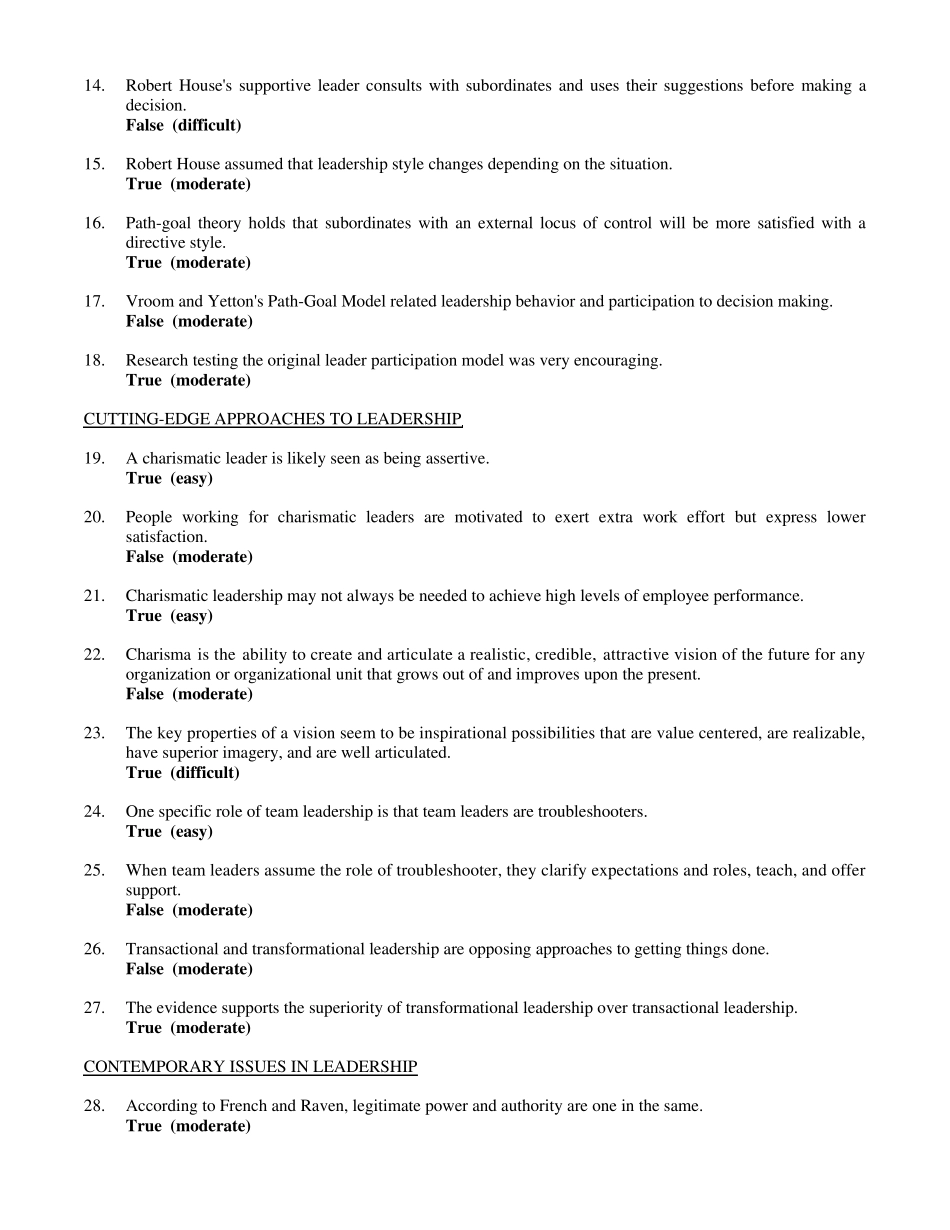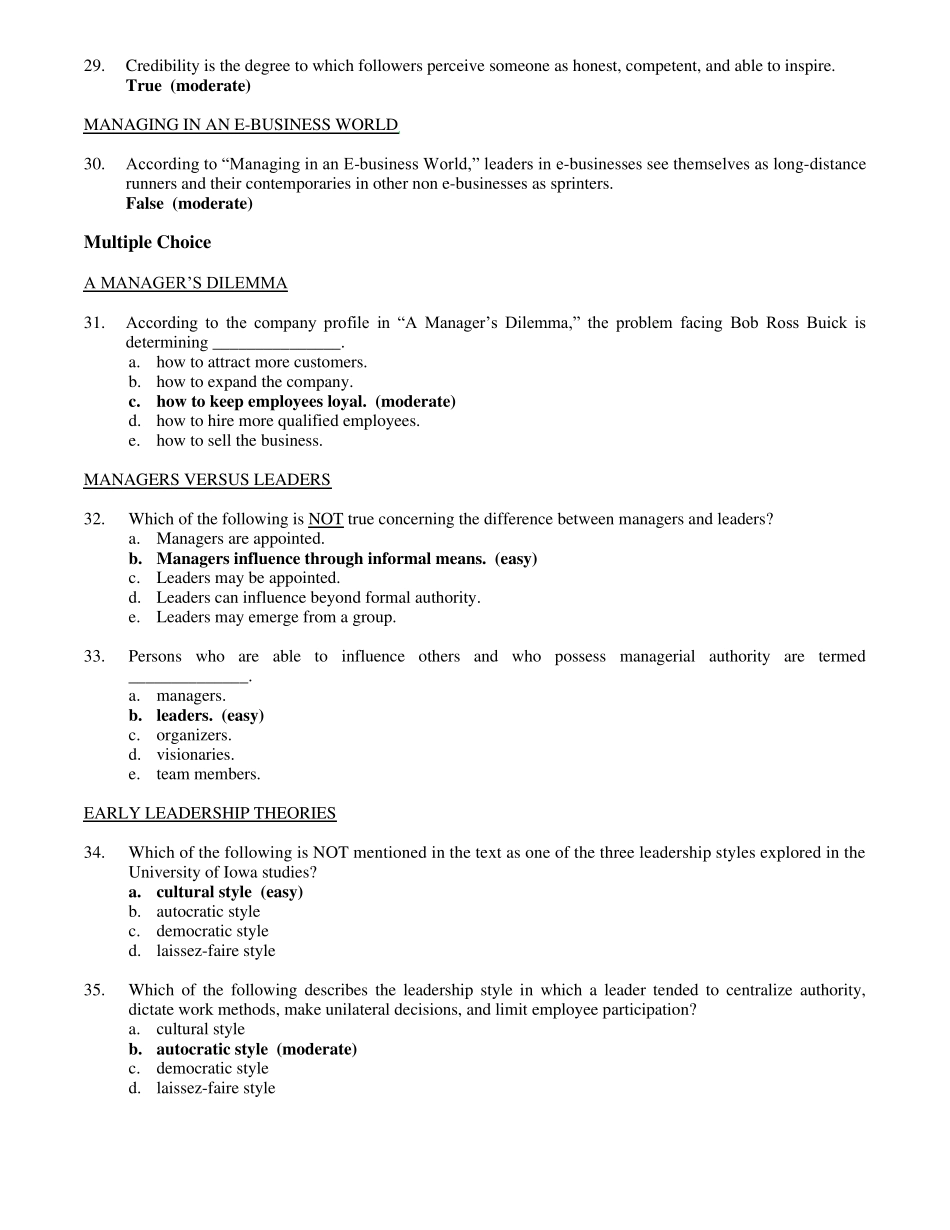Chapter 17 - Leadership True/False A MANAGER’S DILEMMA 1. The Ross family decided to hire an experienced CEO to run Bob Ross Buick upon the death of Bob Ross Sr., the founder of the company. False (moderate) MANAGERS VERSUS LEADERS 2. Managers and leaders are the same. False (easy) 3. Leaders influence a group toward the achievement of goals. True (easy) 4. Not all leaders have the capabilities or skills needed to hold managerial positions. True (easy) 5. Leadership is based on authority granted from organizational position. False (moderate) CONTINGENCY THEORIES OF LEADERSHIP 6. Fiedler's contingency model of leadership style effectiveness depends on the ability and willingness of the subordinates. False (moderate) 7. The least-preferred co-worker questionnaire measure, whether a person is task or relationship oriented. True (easy) 8. Fiedler assumed a person's leadership style was adjusted based on the situation. False (moderate) 9. Fiedler identified three contingency dimensions: leader-member relations, task structure, and reward power. False (difficult) 10. According to Fiedler's research, task-oriented leaders tended to perform better in situations that are very favorable to them and in situations that were very unfavorable. False (difficult) 11. According to Fiedler's research, relationship-oriented leaders seemed to perform better in very unfavorable situations. False (moderate) 12. Review of the major studies undertaken to test the overall validity of the Fiedler model led to a generally positive conclusion. True (moderate) 13. Robert House's path-goal theory is an expectancy theory of motivation. False (moderate) 14. Robert House's supportive leader consults with subordinates and uses their suggestions bef...


